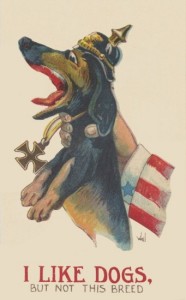 It is with some trepidation that I launch into a post on the First World War. There has been a spat between government ministers and historians about the myths/realities/teaching of the war and already some commentators are arguing against the commemoration of the war. The What ifs have also begun, with arguments for and against Britain’s involvement in the war.
It is with some trepidation that I launch into a post on the First World War. There has been a spat between government ministers and historians about the myths/realities/teaching of the war and already some commentators are arguing against the commemoration of the war. The What ifs have also begun, with arguments for and against Britain’s involvement in the war.
To see what academics are researching and writing about today, I’ve noted a few First World War articles that interested me and I hope interest readers.
The first article begins at the beginning, or a few weeks before, with the assassination of Archduke Franz Ferdinand. Adam James Bones in, British National Dailies and the Outbreak of War in 19141, explores the press and their portrayal of how Britain entered the conflict from the reaction to the Archduke’s assassination (sympathetic); the impact of foreign embassies on press reporting (especially from the Germans and Austrians); and the reporting, reactions and forecasts of the outcome of the Austrian Ultimatum. He also examines the link between politicians and the press, especially between Grey and the Fleet Street editors.
For all Britain’s reputation as an animal-loving nation, the next article, The Dog Fancy at War: Breeds, Breeding, and Britishness, 1914-1918 2 by Philip Howell, may cause pause for thought. He discusses the impact of the war and the popularity (or loss of popularity) for some dog breeds such as the dachshund. Even the dog breeder was seen as unpatriotic – dog breeding was seen as a luxury and as a waste of food.
“Next day the German sausage was re-named breakfast sausage, which it has been called ever since, and the Frankenfurters disappeared. They thought all Germans should be pushed out of this country, good and bad alike. A woman who went out leading a little dachshund, had it stoned to death on the pavement, for there was no stemming this ugly tide of racial hatred to which the sinking of the Lusitania had given rise.” 3
On a lighter note and still away from the trenches, Krista Cowman looks at the entertainments for the off-duty soldier in, Touring behind the lines: British soldiers in French towns and cities during the Great War 4. She makes the point that, for many, the war was also the first occasion a soldier visited a foreign country. Drawing on letters, diaries and memoirs, she considers how men responded to the new experiences they found in French towns, exploring everyday and mundane activities such as shopping, dining, cinema and theatre and of course the inevitable visit to a prostitute.
Continuing the entertainment theme, More than a Luxury: Australian Soldiers as Entertainers and Audiences in the First World War 5 by Amanda Laugesen discusses the crucial importance of live entertainment to soldiers on the Western Front – ‘something more than a luxury—they are a necessity’ as an Australian trench newspaper asserted. It also examines entertainment and audience experiences in order to reveal something about soldiers’ interaction with popular culture, as well as the trench culture shared by soldiers.
An interesting parallel to the above article, though set in the Second World War, is Sam Lebovic’s,“A Breath from Home”: Soldier Entertainment and the Nationalist Politics of Pop Culture during World War II 6, which looks at the USO Camp Shows and the entertainments provided to American soldiers to boost morale and depict the home for which the troops were fighting.
But what about after the war and the ex-servicemen? Carolyn Malone looks at the training for disabled verterans in, A job fit for heroes? Disabled veterans, the Arts and Crafts Movement and social reconstruction in post-World War I Britain. 7 She explores the government-backed employment and training opportunities for disabled veterans, a scheme that ultimately failed. Interestingly there is a film promoting a similar scheme entitled Broken in the Wars (1918) that helped promote The King’s Fund for Disabled Officers and Men, fronted by MP John Hodge.
Continuing the veterans theme there is Michael Hammond’s, War Relic and Forgotten Man: Richard Barthelmess as Celluloid Veteran in Hollywood 1922-1933 8 which explores the role of popular Hollywood film culture in the construction and commemoration of the war using the films of actor Barthelmess. In The Enchanted Cottage (1924) he plays a disfigured veteran who finds love, and in Heroes for Sale (1933), set during the Depression, he portrays a recovering addict veteran struggling in civilian life.
All relevant material will appear in BBIH.
1 The International History Review. 35: 5, 2013 p. 975-92
2 Society & Animals, Volume 21: 6, 2013 p. 546 – 567
3 Bloom, Ursula. Youth at the gate. 1959 p. 95
4 Urban History, 41, 2013 p. 105-123.
5 Journal of War & Culture Studies 6:3, 2013 p. 226-38
6 Journal of Social History 47:2, 2013 p. 263-296
7 First World War Studies 4:2, 2013 p. 201-17
8 Journal of War and culture studies 6:4, 2013 p. 283-301
